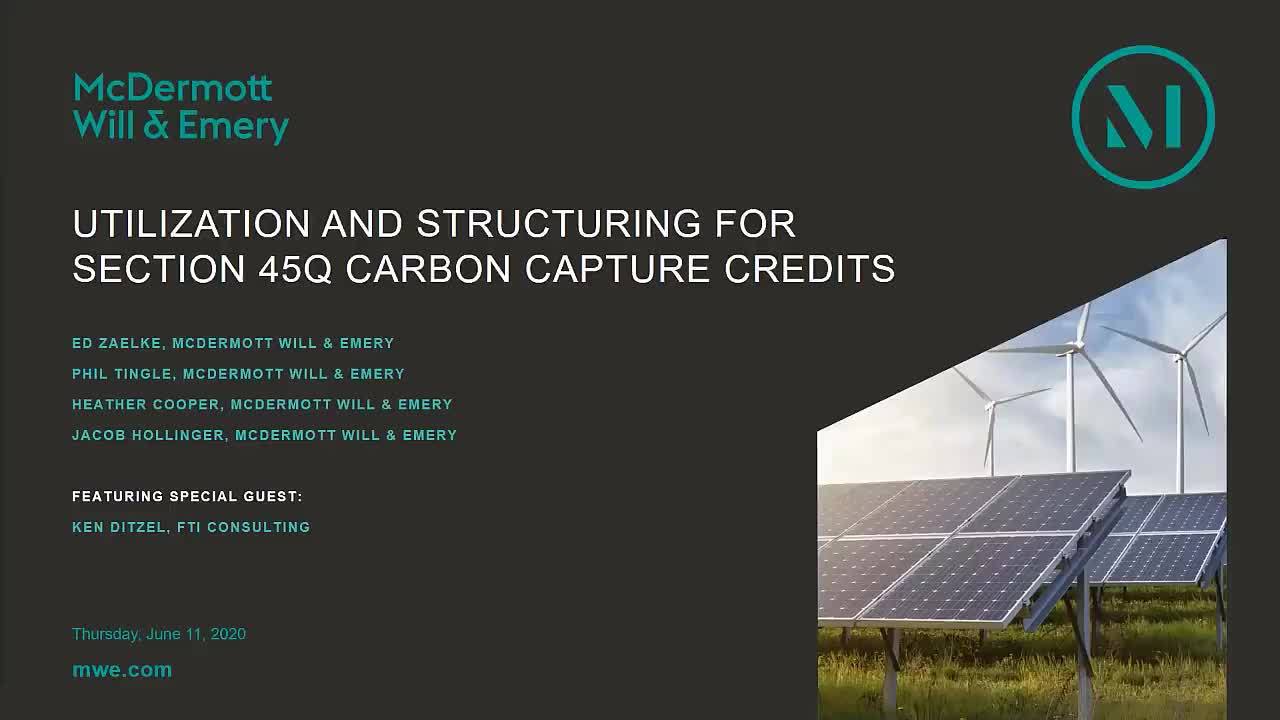On Thursday, June 11, McDermott partners Phil Tingle, Heather Cooper and Jacob Hollinger were joined by Ken Ditzel, managing director at FTI Consulting, to discuss their insights into the proposed Section 45Q carbon capture and sequestration credit regulations.

The Treasury Department and IRS recently published proposed regulations implementing the Section 45Q carbon capture and sequestration credit. The regulations clarify some questions about the credit, though many questions remain. For further discussion, see our On The Subject.
Below are six key takeaways from this week’s webinar:
- 1. Carbon capture projects are likely to be economically important moving forward. Ken Ditzel estimated there are more than 600 economically viable projects, including both secure geological storage at deep saline formations and enhanced oil recovery projects.
- 2. The proposed regulations provide a compliance pathway for satisfying the reporting requirements. For long-term storage, taxpayers should comply with Subpart RR of the Clean Air Act’s greenhouse gas reporting rule. For enhanced oil recovery projects, taxpayers may choose either Subpart RR or alternative standards developed by the American National Standards Institute (ANSI).
- 3. Taxpayers can claim the credit if they utilize the captured carbon for a purpose for which a commercial market exists, instead of storing it. Additional guidance is needed to determine what commercial markets the IRS will recognize and how they will go about making those determinations.
- 4. The proposed regulations offer considerable flexibility to contract with third parties to dispose the captured carbon and to pass the section 45Q credit to the disposing party. Contracts must meet certain procedural requirements, including commercially reasonable terms and not limiting damages to a specified amount.
- 5. If the captured carbon dioxide leaks, the carbon capture tax credit is subject to recapture by the IRS. The taxpayer who claimed the credit bears the recapture liability, but IRS guidance permits indemnities and insurance for credit recapture.
- 6. The partnership allocation revenue procedure issued in February 2020 provides flexibility for the section 45Q credit relative to other tax equity structures, by only requiring 50% non-contingent contributions by an investor member. This may make projects easier to finance, especially in light of the other contracting flexibility in the proposed regulations.
Download the key takeaways here.
To begin receiving Energy updates, including invitations to the Renewables Roundtable and Q&A Webinar Series, please click here.
To access past webinars, please click here.


